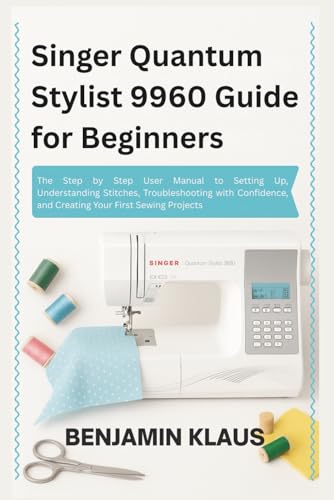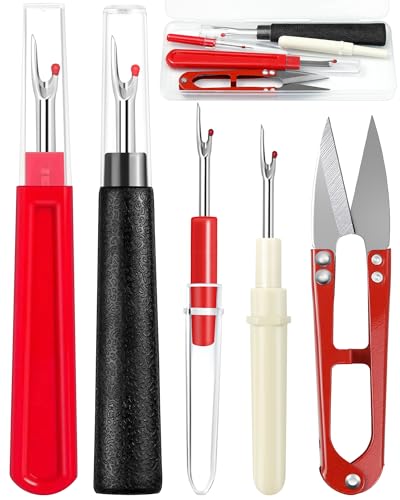Having trouble with your sewing projects? Bobbin tension issues can cause frustrating stitching problems that slow down your creativity. But don’t worry—you’re not alone, and fixing these tension woes is easier than you might think.
Whether you’re a seasoned seamstress or just starting out, understanding how bobbin tension works is key to achieving smooth, professional-looking results. In this guide, you’ll learn how to identify common bobbin tension problems and discover simple steps to troubleshoot and adjust your machine for flawless stitching every time. With a little know-how, you can overcome these challenges and keep your sewing projects on track, ensuring each creation is as perfect as you envision.
Understanding Bobbin Tension
Bobbin tension controls the thread flow from the bobbin, balancing it with the upper thread. Proper tension ensures stitches form correctly without loops or puckering.
Key Components of Bobbin Tension
- Bobbin Case: Holds the bobbin and regulates thread release.
- Tension Screw: Adjusts the tightness of the bobbin thread.
- Thread Path: Guides the thread from the bobbin to the needle, maintaining consistent tension.
Signs of Incorrect Bobbin Tension
- Loops on Fabric: Excessive bobbin tension creates loops on the top side.
- Broken Threads: Too tight tension may cause thread breakage during stitching.
- Uneven Stitches: Inconsistent tension results in irregular stitch sizes and gaps.
Adjusting Bobbin Tension
- Locate the Tension Screw: Find it on the bobbin case area of your machine.
- Turn to Adjust:
- Clockwise to increase tension.
- Counterclockwise to decrease tension.
- Test Stitches: Sew on a scrap fabric to observe changes.
- Fine-Tune as Needed: Make small adjustments until stitches balance properly.
Common Bobbin Tension Settings
| Machine Model | Recommended Tension |
|---|---|
| Singer 4423 | 4 |
| Brother CS6000i | 5 |
| Janome HD3000 | 4.5 |
| Bernina 770 | 5.2 |
Refer to your sewing machine’s manual for specific tension guidelines. Proper bobbin tension aligns with upper tension to achieve smooth, professional stitches.
Common Signs Of Bobbin Tension Problems
- Loops on Fabric: Loops forming on the top side indicate that the bobbin tension is too low, causing the upper thread to dominate.
- Loops on Underside: Loops appearing beneath the fabric suggest the bobbin tension is too high, overpowering the upper thread.
- Broken Threads: Frequent thread breaks occur when tensions are mismatched, requiring a check of both bobbin and upper thread settings.
- Uneven Stitches: Irregular stitch size or spacing results from inconsistent tension between the upper thread and bobbin.
- Puckering Fabric: Fabric gathers happen when the upper tension is higher than the bobbin tension, necessitating a balance adjustment.
- Thread Bunching: Clumped threads on the underside indicate tension irregularities, often needing examination of thread paths and tension settings.
- Skipped Stitches: Missed stitches arise from improper tension, requiring an inspection and possible adjustment of the bobbin or upper thread tension.
- Inconsistent Stitch Quality: Variations in stitch appearance reflect unequal tension forces, making it essential to harmonize both bobbin and upper thread tensions.
Causes Of Bobbin Tension Issues
Understanding the root causes of bobbin tension problems helps you achieve flawless stitching. Here are common factors that can disrupt your sewing projects.
Incorrect Bobbin Winding
Improperly winding your bobbin leads to uneven thread distribution. If the bobbin isn’t wound tightly enough, it causes loose threads, resulting in loops on the fabric. Overwinding can create excessive tension, making the thread break frequently. Ensure you follow your machine’s guidelines for bobbin winding speed and thread amount to maintain consistent tension.
Improper Thread Selection
Using the wrong thread type affects bobbin tension balance. Heavy fabrics require stronger threads, while delicate materials need finer threads. Mismatched threads between the upper and bobbin can cause uneven stitches and puckering. Select threads that match your fabric weight and project requirements to ensure smooth, professional results.
Tangle Or Jam In Bobbin Area
Thread tangles or jams in the bobbin area disrupt the smooth flow of the lower thread. Dirt, lint, or leftover threads can accumulate, increasing resistance and altering tension. Regularly clean the bobbin case and surrounding area to prevent build-up. Inspect for any obstructions and ensure the bobbin rotates freely to maintain optimal tension.
Step-By-Step Troubleshooting
Follow these steps to resolve common bobbin tension issues and ensure smooth stitching.
Checking The Bobbin Installation
Ensure your bobbin is correctly installed to maintain proper tension.
- Remove the Bobbin
Open the bobbin case lid and take out the bobbin.
- Reinsert the Bobbin
Place the bobbin back, ensuring the thread winds in the correct direction as indicated by your machine’s manual.
- Verify Orientation
Confirm the flat side of the bobbin faces the right direction, typically toward the tension spring.
- Secure the Bobbin
Make sure the bobbin sits fully in the case and clicks into place without any gaps.

Adjusting The Tension Screw
Fine-tune the bobbin tension screw for balanced stitching.
- Locate the Tension Screw
Find the screw on the bobbin case, usually marked with numbers.
- Turn the Screw
- Increase Tension: Turn the screw counterclockwise.
- Decrease Tension: Turn the screw clockwise.
- Make Small Adjustments
Turn the screw a quarter turn at a time to avoid overcompensation.
- Test on Scrap Fabric
Sew a few stitches on scrap material to check the tension before adjusting further.
Rewinding The Bobbin
Properly rewinding the bobbin ensures even thread distribution.
- Remove the Bobbin
« 10 Expert Tips on How to Sew Linen for Breathable Garments You’ll Love
Never Let Your Sewing Machine Skip Stitches Again – Here’s What to Do »
Take the bobbin out of the case.
- Set Up the Rewinding Mechanism
Place the bobbin on the rewinding spindle and secure it with the tension spring.
- Thread the Machine
Guide the thread through the rewinding slot without tangling.
- Wind the Bobbin
Start the machine and let it wind the thread evenly across the bobbin’s surface.
- Finish and Cut
Once the bobbin is full, stop the machine, remove the bobbin, and cut the thread, leaving a tail for easy insertion.

By following these steps, you can effectively troubleshoot and adjust bobbin tension, ensuring flawless stitching in your sewing projects.
Preventive Maintenance Tips
- Clean the bobbin area regularly. Remove lint and debris after each sewing session to prevent thread buildup that can disrupt tension.
- Use high-quality threads. Select threads that match your project requirements to ensure consistent tension and reduce the risk of breakage.
- Properly wind the bobbin. Evenly distribute the thread while winding to avoid uneven tension. Use a bobbin winder attachment for best results.
- Check thread compatibility. Ensure the upper thread and bobbin thread are compatible to maintain balanced tension and smooth stitching.
- Inspect and replace worn parts. Regularly examine the bobbin case, tension screw, and other components for wear. Replace any damaged parts promptly to maintain optimal tension.
- Keep your machine lubricated. Apply manufacturer-recommended oil to moving parts to ensure smooth operation and prevent tension issues caused by friction.
- Store your machine correctly. Keep your sewing machine covered and in a dry environment to protect it from dust and moisture that can affect tension settings.
- Use the correct needle type and size. Match the needle to your fabric and thread to minimize tension problems and achieve clean stitches.
- Avoid overloading the spool pin. Use appropriate spool caps to hold spools securely, preventing thread tangles that can interfere with bobbin tension.
- Test settings with scrap fabric. Before starting a project, sew on scrap material to verify that bobbin tension is correctly adjusted, ensuring flawless stitching from the start.
When To Seek Professional Help
If your bobbin tension issues persist despite following troubleshooting steps, it’s time to consult a professional. Persistent loops, uneven stitches, or frequent thread breaks after adjusting tension screws may indicate deeper machine problems. Complex mechanical failures, such as a malfunctioning tension regulator or damaged bobbin case components, require expert diagnosis and repair. Additionally, if your sewing machine makes unusual noises or fails to operate smoothly, professional servicing ensures accurate and safe repairs. Attempting to fix intricate internal issues without proper knowledge can lead to further damage. Regular maintenance by a professional can prevent recurring tension problems and extend your machine’s lifespan. When in doubt, contacting a qualified sewing machine technician guarantees that your machine receives the appropriate care for optimal performance.
Conclusion
Mastering bobbin tension opens up endless possibilities for your sewing projects. With the tips and steps you’ve learned you can tackle tension issues confidently. Remember to take your time when making adjustments and keep up with regular maintenance. Happy sewing and enjoy creating flawless stitches every time!
















